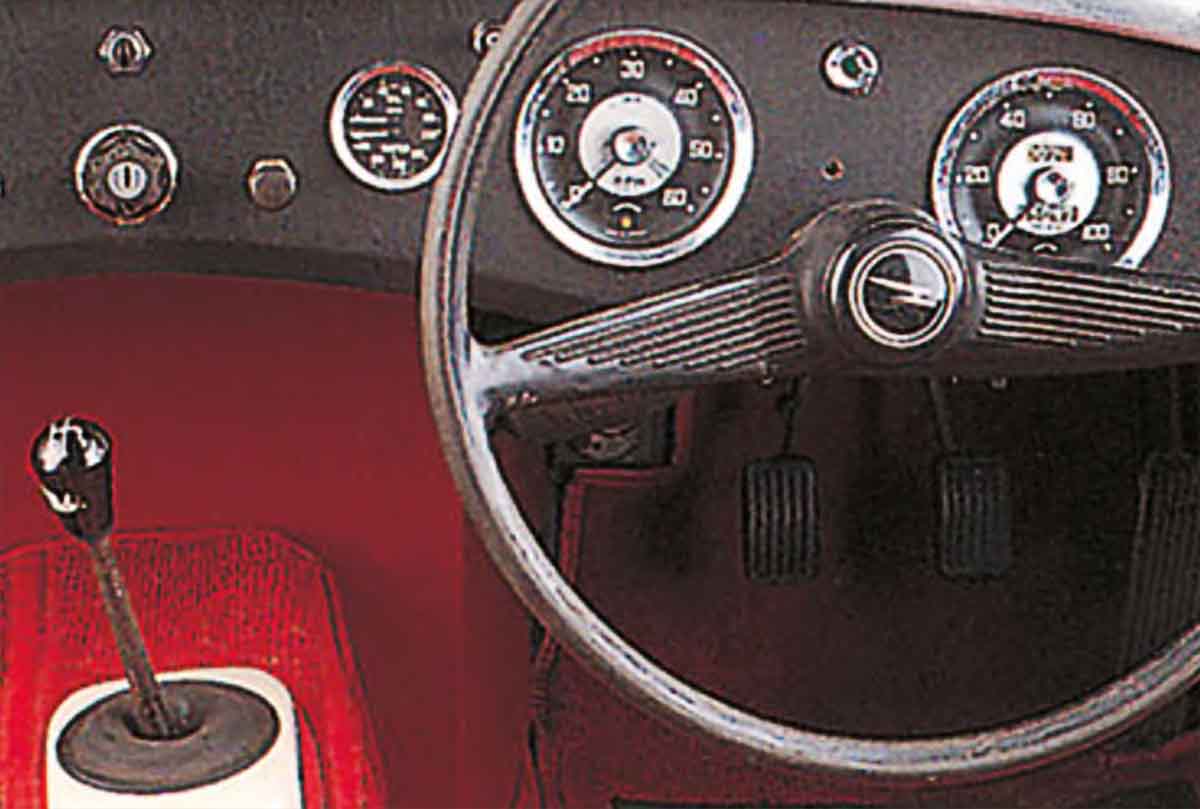
Sports Cars
Cars are complicated and expensive to design and build, so manufacturers have always tried to find ways of reusing components in as many models as possible, which meant developing new markets. In the 1950s they discovered sports cars. A new generation of drivers wanted fun and excitement, and car-makers were happy to provide them with low-slung coupes and convertibles, many of which became motoring icons. Under the skin, however, most of these racy models shared engines, suspension, and other parts with sedate saloons. Americans in particular had a huge appetite for compact, European-made sports cars, and bought them by the shipload.
Austin-Healey Sprite Mk I, 1958

| Origin | UK |
| Engine | 948 cc, straight-four |
| Top speed | 84 mph (135 km/h) |
Designed for inexpensive fun, the Sprite became known as the “Frogeye” (or “Bugeye” in the US), thanks to its distinctive inboard-mounted headlights. It is said that they were first conceived to flip up like a Porsche 928. Sprite owners had to make do without outside door handles and boot lids.

Style and simplicity
The simple dashboard and instrument display were in keeping with the Sprite’s uncomplicated character. Some of the dials and switches were shared with Austin and Morris models.

Well-rounded ride
The Austin-Healey Sprite’s characteristic, rounded appearance was dictated in part by how the car was made. There were no external door handles, so the driver and passenger had the use of interior handles.

Below the bonnet
The one-piece bonnet allowed complete access to the Sprite’s engine, brakes, and suspension. The car was powered by the tough A Series engine also found in the Austin A35 and Morris Minor.
Alfa Romeo Giulietta Spider, 1955

| Origin | Italy |
| Engine | 1,290 cc, straight-four |
| Top speed | 112 mph (180 km/h) |
This elegant sports car, styled by Italian design house Pininfarina, had performance far higher than its 1.3 liters would suggest, thanks to its superb, free-revving, alloy, twin-cam engine. Unlike its simply engineered British rivals, the sophisticated Spider was a scaled-down exotic.
MGA, 1955

| Origin | UK |
| Engine | 1,489 cc, straight-four |
| Top speed | 100 mph (161 km/h) |
The sleek, low-slung MGA marked a big departure for its makers, which had built cars with a design template that could be traced back to the 1930s. The MGA handled nicely, could achieve 100 mph (161 km/h), and sold well in the US, though a temperamental twin-cam version proved less successful.
Porsche 356A, 1955

| Origin | Germany |
| Engine | 1,582 cc, flat-four |
| Top speed | 100 mph (161 km/h) |
With its rear engine and swing-axle rear suspension, the 356 was essentially a high-performance VW Beetle with a coupe body; and both cars were designed by Ferdinand Porsche. Launched in 1950, the 356 grew ever faster, with the twin-cam Carrera form reaching a speed of 125 mph (201 km/h).
BMW 507, 1956

| Origin | Germany |
| Engine | 3,168 cc, V8 |
| Top speed | 135 mph (217 km/h) |
When the 507 was launched, BMW imagined that this beautiful V8-engined car would be a big hit in the US, but prices were virtually double those anticipated. In the event, only 250 were sold and BMW narrowly avoided bankruptcy. Despite this, the car became an instant design classic and style icon.
It is a quote. The Classic Car Book – The Definitive Visual History 2016




